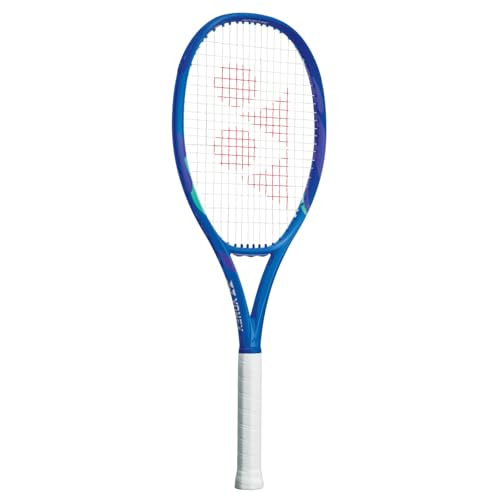The Growing Popularity of Tennis
The sport of tennis has experienced a remarkable surge in popularity across the globe in recent years. Several critical factors contribute to this trend, notably the increased visibility of tennis through comprehensive television coverage.
Major tournaments, such as Wimbledon and the US Open, are broadcast to millions, bringing the excitement of matches directly into homes. This enhanced exposure not only showcases the athleticism and skill of professional players but also engages new audiences who may not have followed the sport previously.
Accessibility is another vital factor in the growing popularity of tennis. Public courts have become more widely available in urban and rural settings alike, lowering barriers to entry for potential players. Community initiatives and local clubs are increasingly promoting tennis through affordable programs, helping people of all ages participate in the sport.
This grassroots approach has made tennis more inclusive, encouraging participation among diverse demographics, including children and young adults who are now more inclined to pick up a racket.
Celebrity endorsements play a significant role in generating interest in tennis as well. Public figures, including athletes from other sports and prominent entertainers, are often seen attending matches or sponsoring events. Their influence can draw in fans who might not typically engage with the sport, thus widening its appeal.
In particular, younger generations are becoming increasingly immersed in the world of tennis, thanks, in part, to the efforts of social media influencers and platforms that highlight exciting content and player personalities.
The sport’s adaptation to modern technologies and media trends, along with its community-oriented programs, has ensured that tennis remains relevant and appealing in a rapidly changing world. The convergence of these factors has undoubtedly contributed to the accelerated growth of tennis’s popularity, establishing it as a prominent sport for the upcoming generations.
A Brief History of Tennis
Tennis, as a sport, boasts a rich history that stretches back several centuries. Its origins can be traced to a game known as “jeu de paume,” which emerged in France during the late 12th century. Initially played with the palm of the hand, players subsequently adopted the use of gloves, and by the 16th century, rackets were introduced. This transformation set the stage for what we now recognize as tennis, moving from a court-based pastime enjoyed by royalty to a beloved global sport.
The game developed significantly during the 19th century, particularly in England. In 1873, Major Walter Clopton Wingfield patented a version of tennis that was played outdoors, which introduced the concept of modern tennis. This rendition of the game was initially dubbed “Sphairistikè,” and it evolved rapidly, leading to the establishment of standard rules.
By 1877, the All England Lawn Tennis and Croquet Club hosted the first Wimbledon Championship, solidifying tennis’s status as a premier sporting event.
The advent of lawn tennis marked a pivotal moment in the sport’s evolution. Defined playing areas, a standardized scoring system, and the iconic grass courts became established norms. The late 19th and early 20th centuries witnessed the rise of prominent figures, including champions like Arthur Ashe and Rod Laver, whose contributions shaped the game’s appeal and competitive framework.
The introduction of professional circuits in the 1960s further contributed to the sport’s growth, attracting audiences and players from diverse backgrounds.
Today, tennis flourishes globally, regarded not only as an Olympic sport but also as a cultural touchstone that unites people across various countries. Iconic tournaments such as the US Open and Roland Garros continue to draw crowds, celebrating both the sport’s storied past and its vibrant present. The ongoing evolution of tennis reflects its adaptability, ensuring that it remains a captivating pursuit for both players and fans alike.
Tennis and Sports Fitness
Tennis is a physically demanding sport that requires a unique blend of stamina, flexibility, endurance, and strength. Engaging in tennis not only provides enjoyment but also serves as an excellent workout for athletes. The fast-paced nature of the game necessitates the ability to sprint between the baseline and the net, requiring considerable cardiovascular fitness and explosive power.
As players chase down balls at high speed, they must also develop exceptional agility and coordination, crucial for delivering effective shots and returning serves.
Stamina is paramount in tennis, as matches can extend for many hours, often under various weather conditions. Players develop their aerobic capacity through extensive on-court practice sessions and off-court endurance training, such as running or cycling. Additionally, flexibility is essential to maintain a full range of motion, especially during serves and groundstrokes.
Common drills incorporate dynamic stretches to enhance flexibility, helping prevent injuries and improve overall performance.
The strength aspect of tennis cannot be overlooked. Players typically engage in strength training routines focusing on core muscles, legs, and upper body. Resistance training, involving free weights or resistance bands, is common among athletes to build the necessary muscle strength for powerful shots and quick movements. These strength programs not only increase performance but also play a crucial role in injury prevention.
Regular strength conditioning helps players endure the repetitive movements involved in tennis, reducing the risk of overuse injuries that are prevalent in the sport.
The physical demands of tennis are multifaceted, requiring a well-rounded fitness regimen that includes endurance, strength, and flexibility training. By understanding and implementing effective fitness routines, athletes can enhance their on-court performance while minimizing the risk of injuries, ultimately contributing to a successful tennis career.
Healthy Nutrition for Tennis Players
Nutrition plays a vital role in optimizing performance for tennis players, supporting both their physical and mental well-being. Given the demands of the sport, which includes agility, endurance, and quick bursts of energy, a balanced diet is paramount. Tennis players must prioritize a combination of carbohydrates, protein, healthy fats, and hydration to sustain their energy levels throughout matches.
Carbohydrates serve as the primary fuel source for tennis players, as they are vital for maintaining energy during long rallies and continuous movement on the court. Foods such as whole grains, fruits, and vegetables should form the basis of their meals.
A meal rich in complex carbohydrates a few hours before a match can provide the necessary energy. Examples include oatmeal, brown rice, and whole-grain pasta, which release energy slowly, ensuring players remain energized during play.
Protein is equally important, supporting muscle repair and recovery. Incorporating lean protein sources like chicken, fish, beans, and dairy products into their diet helps tennis players build and maintain strength. It is advisable to consume protein-rich snacks following training or matches to facilitate muscle recovery.
Hydration cannot be overlooked either. Tennis players should consistently hydrate before, during, and after matches to replace lost fluids and maintain peak performance. Water is essential, but for prolonged exertion, sports drinks containing electrolytes can also be beneficial, as they help replenish salts lost through sweat.
Meal planning is crucial to ensure that players have the right nutrients readily available. Creating a meal schedule that includes balanced meals and healthy snacks, such as fruits, nuts, yogurt, and energy bars, ensures they can sustain their performance energy levels.
This approach not only aids in physical performance but also contributes to overall health and well-being. By focusing on nutrition, tennis players can enhance their training and compete effectively on the court.
Essential Tennis Equipment
To engage in tennis effectively, one must possess certain essential equipment that significantly influences performance and overall enjoyment of the sport. The fundamental items include racquets, balls, shoes, and appropriate apparel. Each piece of equipment plays a vital role in facilitating a successful gameplay experience.
The tennis racquet is arguably the most critical instrument. Its design, weight, and string tension can directly affect a player’s control and power during matches. Beginners typically opt for a lightweight racquet that offers a larger head size for enhanced forgiveness, while advanced players may choose heavier models for improved stability and precision.
Therefore, selecting the right racquet tailored to one’s skill level and playing style is indispensable for enhancing performance on the court.
Tennis balls also play a significant role in the game. Standard balls come in various types, with some suited for different court surfaces, such as clay, grass, or hard courts. The pressure of the ball, measured in pounds per square inch (PSI), impacts its bounce and speed, further influencing gameplay.
Players should consider these attributes when selecting their equipment to ensure an optimal playing experience.
Footwear is another crucial element. Tennis shoes are designed to provide adequate support, traction, and stability across the court. The choice of shoes should cater to the specific surface being played on, as different surfaces require distinct types of tread patterns to prevent slippage and enhance grip. Wearing the correct shoes can dramatically influence a player’s movement, endurance, and injury prevention.
Lastly, apparel designed specifically for tennis plays a role in comfort and mobility. Breathable fabrics that wick away sweat ensure players remain cool, while tailored fits allow for unrestricted movement during intense matches.
When considering the totality of tennis equipment, one must recognize that the right gear not only contributes to performance but also enhances the enjoyment and competitiveness of the game.
Understanding the USTA
The United States Tennis Association (USTA) plays a pivotal role in the promotion and development of tennis across the United States. Established in 1881, the USTA has been instrumental in fostering interest and participation in this widely enjoyed sport.
As the national governing body for tennis, the USTA is dedicated to enhancing the experience for players at all levels, from beginner to professional. Its broad spectrum of activities encompasses organizing major tournaments, such as the US Open, which is one of the four Grand Slam events in the world, as well as local and regional competitions.
Furthermore, the USTA is committed to increasing accessibility and participation in tennis through various development programs. These initiatives cater to players of different ages and skill levels, encouraging young and potential athletes to take up the sport.
Programs like the USTA Junior Team Tennis and the Net Generation initiative are designed to introduce tennis to kids in a fun and engaging manner, laying the foundation for a lifelong enjoyment of the game.
In addition to youth programs, the USTA actively promotes inclusivity and diversity within the sport. It seeks to provide opportunities for underrepresented communities to engage with tennis through outreach programs and partnerships with local organizations. The association believes that tennis can be a vehicle for positive social change, and through its community efforts, it strives to make the sport accessible to everyone.
With its comprehensive approach to developing tennis at all levels, the USTA continues to shape the landscape of the sport in the U.S. By investing in both grassroots and elite initiatives, the organization ensures a bright future for tennis, while fostering a thriving community of players who love the game.
The Role of the WTA
The Women’s Tennis Association (WTA) plays an essential role in the development and promotion of women’s tennis globally. Founded in 1973 by Billie Jean King, the WTA strives to advocate for female athletes, ensuring they receive equal opportunities and recognition in a historically male-dominated sport.
The organization’s primary objective is to promote the growth of women’s tennis through various initiatives, enabling female players to thrive within the competitive landscape.
One of the WTA’s significant achievements is its commitment to elevating the visibility of women in tennis. By organizing prestigious tournaments around the world, such as the WTA Finals and the prestigious Grand Slams, the WTA provides female athletes with both a platform and the financial rewards that accompany successful competition. This visibility not only helps grow the sport but also attracts sponsorships that are crucial for funding and supporting young female talent.
In addition to promoting tournaments, the WTA actively engages in initiatives that focus on empowering women and girls in sports. Programs aimed at encouraging participation in tennis are crucial for increasing the number of young athletes in the pipeline.
Initiatives include partnerships with schools and community organizations, where the association introduces tennis to a broader audience, fostering inclusivity and enthusiasm for the sport.
The WTA also works diligently to address important social issues, such as gender equality and health awareness. By raising awareness about mental health and advocating for better working conditions for female athletes, the association creates a supportive environment that cultivates success on and off the court. Its efforts to create role models among top-ranked players empower the next generation, inspiring young women to pursue careers in tennis.
The Women’s Tennis Association is pivotal in shaping the landscape of women’s tennis. Its endeavors to enhance visibility, offer support, and promote gender equality play a critical role in nurturing women’s talent and ensuring the sustainability of tennis as a relevant sport for future generations.
The ITF and its Competitions
The International Tennis Federation (ITF) plays a crucial role in the governance and promotion of tennis on an international scale. Established in 1900, the ITF is responsible for overseeing the rules of the game and ensuring that competitions adhere to a standardized format, fostering fairness and integrity in the sport.
With its headquarters in London, the ITF organizes various prestigious events that cater to both professional and amateur players, thus promoting tennis across all levels of skill and age.
One of the most notable competitions under the auspices of the ITF is the Davis Cup, which showcases national teams competing for glory in men’s tennis. This tournament not only highlights the competitive spirit of the sport but also strengthens the international tennis community by allowing countries to come together through sportsmanship.
Similarly, the Fed Cup, which focuses on women’s tennis, offers a comparable platform where countries vie for supremacy, further underscoring the ITF’s commitment to inclusivity and equal representation in the sport.
The ITF also oversees the Grand Slam tournaments, in conjunction with the ATP and WTA tours, which are essential landmarks in the professional tennis calendar. These events attract top talent and bring significant attention to the sport, contributing to its popularity worldwide.
In addition, the ITF runs multiple junior and senior tournaments, ensuring that players at all levels have opportunities to compete, develop their skills and enhance their visibility in the tennis ecosystem.
Furthermore, the ITF actively promotes grassroots initiatives aimed at increasing tennis participation globally. Through various programs, the organization focuses on improving facilities, providing coaching resources, and encouraging youth engagement in tennis.
By establishing a seamless pathway from recreational play to professional competition, the ITF supports the sport’s continued growth and success, leaving a lasting influence on the global tennis landscape.
Annual and Monthly Events in Tennis
The world of tennis is characterized by a well-structured calendar featuring numerous significant events that attract attention from fans and players alike. The pinnacle of these competitions includes the four Grand Slam tournaments: the Australian Open, the French Open, Wimbledon, and the US Open. Each of these tournaments boasts a unique format, playing surface, and cultural significance.
For instance, the Australian Open is held on hard courts in Melbourne during January, known for its vibrant atmosphere and often extreme heat. Conversely, the French Open, played on clay at Roland Garros, is renowned for its grueling matches that test players’ endurance and skill in the spring months.
Wimbledon, the oldest tennis tournament, captivates audiences with its traditions and grass courts, held yearly in London during late June and early July. Finally, the US Open, with its energetic spirit, concludes the Grand Slam calendar at the end of the summer, featuring night matches that create an electrifying experience for spectators.
Together, these Grand Slam events form the cornerstone of the professional tennis season, establishing the rhythm and excitement of the sport.
Complementing the Grand Slam tournaments are the ATP and WTA tours, which consist of a series of annual events that allow players to accumulate rankings and prize money. The ATP World Tour features various levels of competitions, culminating in the ATP Finals, while the WTA offers its own series of tournaments leading to the WTA Finals.
Monthly events rotate globally, deeply enriching the tennis landscape. Major International events that take place throughout the year, including ATP Masters 1000 and WTA 1000 tournaments, draw considerable crowds and media attention, showcasing top-tier talent.
Overall, the structure of the tennis season is a blend of prestigious tournaments and regular season events, each providing unique experiences for players and fans, ultimately contributing to the sport’s expanding global appeal.













